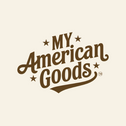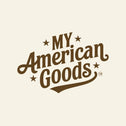A few months ago, when American Eagle launched their now-iconic jean campaign with Sydney Sweeny, much of America swooned. Western romance, dusty blue denim, Americana nostalgia, and sexual allure — it was the perfect fantasy.
But another part of America fumed. With the double entendre of Sweeney having good jeans/genes, the ad implied, as a recent GQ journalist framed it, a “joke about genetic superiority.” A scandal erupted.
But what didn’t make headlines is the real scandal: American Eagle jeans aren’t even made in America.
In fact, none of American Eagle’s clothing is.
Their denim — and nearly every other category they sell — is not produced in Tennessee. Not in North Carolina. Not in any U.S. denim mill. Rather, it’s made in China, Vietnam, India, Bangladesh, Mexico, and Cambodia.
(American Eagle factory disclosures via Open Apparel Registry)
This isn’t a scandal in the legal sense. But it is a scandal in the cultural sense — one consumers deserve to understand.
Because today, the real deception is far more subtle: Brands are selling the American story while exporting the American job.
They are selling the feeling of American heritage while outsourcing the production of it. And to us, this illusion is a scandal.
The marketing points to rodeos, ranches, and small-town America.
But the supply chain points to Dhaka, Ho Chi Minh City, Guangzhou, and Puebla.
It’s not dishonest by technical standards.
But it is deeply misleading by emotional ones.
In 2025, consumers deserve better transparency — especially when “American-made” is surging as one of the fastest-growing search terms in retail.
And for companies like mine, that actually work with true American-made brands every day, the contrast is glaring.
The Rise of the American Aesthetic — And the Fall of American Manufacturing
American Eagle is just one corporate example. But we can see this emotional manipulation everywhere we look, even in small towns. For instance, recently my husband and I spent a weekend in the Berkshires. And we were shocked at a “Trading” store selling clothes and blankets with Western and Native American designs — because everything was made in China!
For the last decade, U.S. apparel marketing has leaned heavily into workwear nostalgia and Americana storytelling. We see images of farms, wheat fields, pick-up trucks, and rural romance.
But somewhere along the way, the clothes stopped coming from America.
This is not a secret.
But brands never lead with it — because it punctures the illusion.
Consumers see “American Eagle” paired with western landscapes, cowboy boots, and vintage Americana iconography and understandably assume they’re supporting an American industry.
But they aren’t.
And the truth is that by buying American aesthetic clothes made abroad, they’re actually hurting American craftsmen and businesses.
The Unfair Fight: American-Made Makers vs. Global Giants
As the founder of My American Goods, I work directly with U.S. makers every day — from tallow skincare artisans to potters, smiths, ceramicists, and stitchers.
And let me tell you something plainly:
American makers cannot compete on price with companies outsourcing to low-wage countries. When you manufacture in America, every overhead cost is higher:
· Labor is higher
· Compliance is higher
· Materials are higher
· Taxes are higher
· Insurance is higher
· Rent is higher
Meanwhile, overseas factories often operate under very different—and far cheaper—conditions.
(McKinsey apparel sourcing report: https://www.mckinsey.com/industries/retail/our-insights/state-of-fashion)
But guess what?
Both products sit on the same retail shelf — and the imported one gets to borrow the “American” aesthetic without paying the American cost.
See the unfairness?
Why This Story Matters More Than You Think
Millions of people genuinely believe they’re supporting an American industry when they shop American Eagle, Hollister, Abercrombie, Gap, or similar brands. But the truth is that less than 3% of apparel sold in the U.S. is actually manufactured here.
(Source: American Apparel & Footwear Association – https://www.aafaglobal.org/)
(U.S. Bureau of Labor Statistics – https://www.bls.gov/)
This means:
· 97% of “American style” isn’t American-made
· Most “cowboy-core” isn’t made anywhere near a ranch
· Most “heritage denim” never touched U.S. soil
· Most “All-American” clothing is produced by global subcontractors
(Fashion Transparency Index: https://www.fashionrevolution.org/transparency)
In contrast, when people choose true American-made brands, they keep alive:
· American jobs
· American mills
· American craftsmanship
· American ranchers
· American small businesses
· American textile history
When they buy from foreign-made “American aesthetic” brands, they support none of those things — even if the branding makes it feel like they are.
The good thing is that consumers are waking up — but slowly.
Blogs like this accelerate the awareness that big brands hope stays blurry.
Want Real American-Made? Here’s Where It Actually Lives
At My American Goods, every brand we carry is based here — and manufacture here.
Every purchase supports real workers, real towns, real small businesses, and real craftsmanship.
Explore the difference:
This is what the American story should actually look like.
Because the real American story isn’t told by marketing campaigns.
It’s told by the makers who are still here, still working, still crafting, and still choosing America every single day.
































































